WHAT ARE HERITAGE BREEDS?
Heritage breeds are traditional livestock breeds that were raised by our forefathers. These are the breeds of a bygone era, before industrial agriculture became a mainstream practice. These breeds were carefully selected and bred over time to develop traits that made them well-adapted to the local environment and they thrived under farming practices and cultural conditions that are very different from those found in modern agriculture.
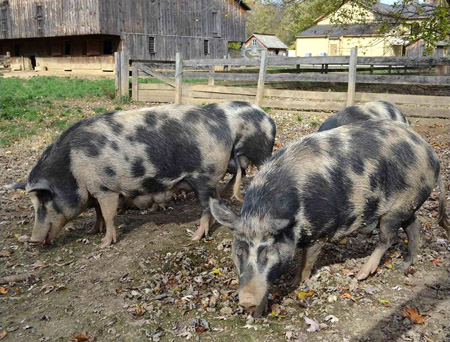 Traditional, historic breeds retain essential attributes for survival and self-sufficiency – fertility, foraging ability, longevity, maternal instincts, ability to mate naturally, and resistance to diseases and parasites.
Traditional, historic breeds retain essential attributes for survival and self-sufficiency – fertility, foraging ability, longevity, maternal instincts, ability to mate naturally, and resistance to diseases and parasites.
Heritage animals once roamed the pastures of America’s pastoral landscape, but today these breeds are in danger of extinction. Modern agriculture has changed, causing many of these breeds to fall out of favor. Heritage breeds store a wealth of genetic resources that are important for our future and the future of our agricultural food system.
If you are interested in helping conserve these breeds, please visit “Getting Started with Heritage Breeds” in the Resources area of our website.
What is “Heritage?”
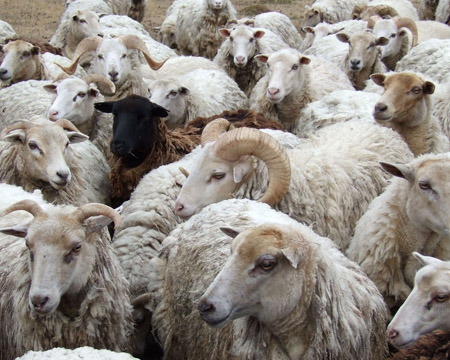
- Why define “Heritage” for livestock and poultry species?
- Why is The Livestock Conservancy the organization best-suited to create these definitions?
- Is the “Heritage” label recognized by USDA?
- Who monitors or polices the use of the term “heritage” on products?
- What are the Heritage definitions?
Heritage is largely a term of art and not science, but The Livestock Conservancy is working to define “Heritage” for various species in order to codify the term in the marketplace. Thus far, the Conservancy has defined heritage for chickens, turkeys, cattle, and swine.
In a more general sense, heritage animals are the animals that you’d find on your great-grandparents farms. Heritage is an umbrella term that embraces pure breeds of livestock and poultry with deep histories in the United States. These are animals that were bred over time to develop traits that made them suited to specific local environments. Because these breeds have been developed and selected over time, they tend to have better disease resistance, are well-adapted to their environments, and thrive in pasture-based settings.
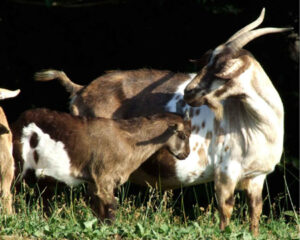 Many breeds used in large scale agriculture have been specifically selected for intensive production including rapid growth, feed efficiency, continuous milk or egg production, or other targeted production characteristics. Heritage breeds have genetics that are more “well-rounded.” While breeders may select their animals for certain characteristics, they’re not selected so narrowly so as to lose other valuable and biologically important characteristics.
Many breeds used in large scale agriculture have been specifically selected for intensive production including rapid growth, feed efficiency, continuous milk or egg production, or other targeted production characteristics. Heritage breeds have genetics that are more “well-rounded.” While breeders may select their animals for certain characteristics, they’re not selected so narrowly so as to lose other valuable and biologically important characteristics.
Why is The Livestock Conservancy the organization best-suited to create these definitions?
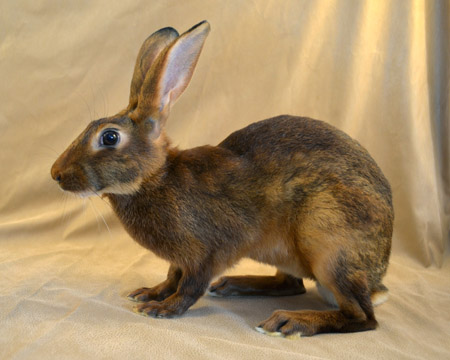 The Livestock Conservancy is nonpartisan in the creation of these definitions. Our mission is the genetic conservation and promotion of endangered breeds of livestock and poultry. We are not looking to make a sale, or gain a profit, but to conserve these breeds for our future and the future of our food system. The Conservancy has a vast network of contacts and resources that have contributed to and influenced the definitions that have been created. Each of the definitions is created through discussion with partners and stakeholders.
The Livestock Conservancy is nonpartisan in the creation of these definitions. Our mission is the genetic conservation and promotion of endangered breeds of livestock and poultry. We are not looking to make a sale, or gain a profit, but to conserve these breeds for our future and the future of our food system. The Conservancy has a vast network of contacts and resources that have contributed to and influenced the definitions that have been created. Each of the definitions is created through discussion with partners and stakeholders.
Why define “Heritage” for livestock and poultry species?
The Livestock Conservancy’s goal in defining Heritage is to secure the term in the food and agricultural marketplaces so that it becomes a term that consumers can rely upon. Most heritage breeds are also endangered breeds, so by defining Heritage it allows for the reintroduction of these breeds to the marketplace as the cultural and culinary treasures that they are. Defining Heritage helps create a market niche while helping to conserve traditional breeds, their genetics, and their agricultural systems. Developing a marketplace for endangered breeds is a critical piece of conserving them for the future and central to the Conservancy’s mission.
Is the “Heritage” label recognized by USDA?
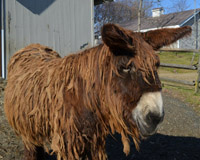 The “Heritage” labels have not been officially recognized by the USDA certification process; however, producers have successfully added the “Heritage” term to their labels and won the approval of USDA by using the published definition. This has set a precedent for future use.
The “Heritage” labels have not been officially recognized by the USDA certification process; however, producers have successfully added the “Heritage” term to their labels and won the approval of USDA by using the published definition. This has set a precedent for future use.
The Livestock Conservancy’s goal is to educate the consumers. We want them to know the definition of Heritage and to boldly ask questions to assure that the product carrying the “Heritage” label meets the definition of the term.
Who monitors or polices the use of the term “heritage” on products?
Consumers and peers. The Livestock Conservancy does NOT police the term or certify breeders and producers at this point in time. The goal of issuing these definitions is to encourage consumers to learn about the products and ask for the products by name. By educating the consumer, we can empower them to search out these products.
What are the Heritage Definitions?
“…when the last individual of a race of living things breathes no more, another Heaven and another Earth must pass before such a one can be again…”
